SAN JUAN MIDGE
Awhile ago I was asked to submit some fly patterns for the “Old Flies” section of the website and I had to reluctantly turn down the request for articles because I am not a writer nor do I aspire to be a writer. I also don’t have that much to say and the research into “Old Flies” goes way beyond what my personal library holds in information. I also live in a small town and I personally know my “town” library is not stocked full of old fly tying books. There is the internet but that too is limited in finding “old” patterns and their histories.
So that comes to today and after doing some thinking about the request, I decided I would write a little something about a fly pattern that has been very good for me over the years of fishing it and I hope it will give you good results.
History is important and I’ll share what I know about this particular pattern. It was shown to me during my early years fly fishing/tying and of my involvement with the Cutthroat Chapter of Trout Unlimited when I lived in Colorado in the 1980’s.
Before I was able to go on chapter trips (marriage and other obligations), members would head on down to the San Juan River in New Mexico for a weekend of fly fishing for rainbow trout. It was after the members came back from one of those weekend trips that I was told about a fly pattern called the “San Juan Midge”. I do not recall if this was a pattern that came out of a fly shop or one of the member had tie it on the spot, but it sure is effective. Dale Garron, one of the members on the trip, tied it up for us at a chapter meeting. I have had great success using this pattern and variations of it on the Bighorn River (Montana), Green River (Utah), South Platte River (Colorado), Frying Pan River (Colorado) and of course the San Juan River (New Mexico).
Ok so let’s tie the pattern.

Materials:
- Hook: Tiemco 101 #14-26
- Thread: 8/0 Black
- Rib: fine gold or copper wire
- Body: Pheasant tail fibers
- Wing: Zlon
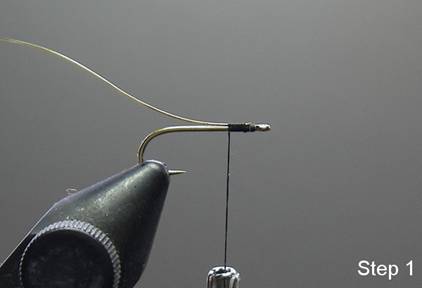
Step 1: Insert the hook in the vise and tie in thread and wire ribbing. Tying in the wire behind the eye of the hook will eliminate a tie in bump at the bend of the hook.
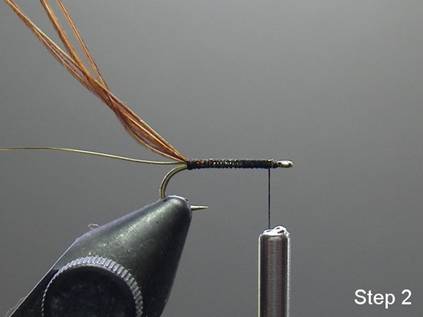
Step 2: Advance your thread and wire to the bend of the hook. (TIP: If you lift the wire as you wrap the thread to the bend, the thread wraps will keep the wire in top of the hook shank).Tie in the pheasant tail fibers at the bend of the hook.
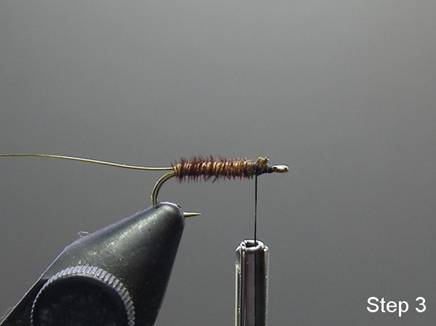
Step 3: Advance your thread to the eye of the hook. Gather the pheasant tail fibers and wrap them to the eye of the hook and tie them off.
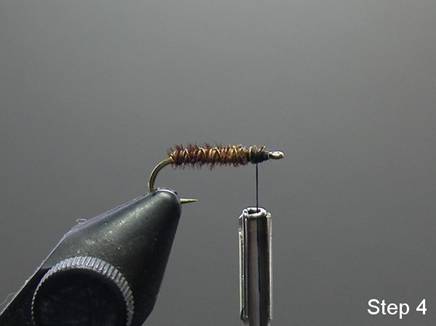
Step 4: Spiral wrap the wire rib forward to the eye of the hook. Let’s pause here for a second: There are 2 ways to wrap the wire rib. Either clockwise or counter clockwise. I will let you make that choice. I have tied them both ways with no difference in quality.
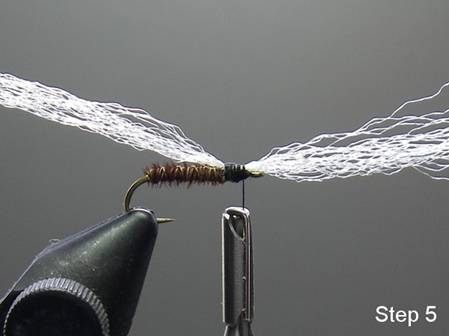
Step 5: Tie in the wing material of your choice. I usually tie in a smaller amount as shown.
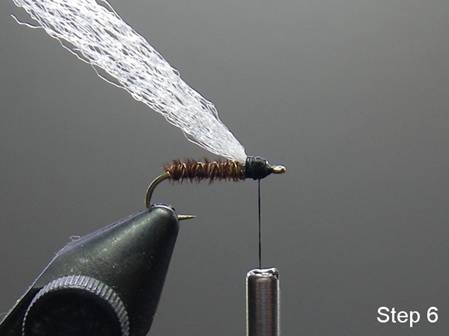
Step 6: Pull the wing material from over the eye of the hook back and tie down. Build the head with thread wrap, half hitch or whip finish and apply head cement.
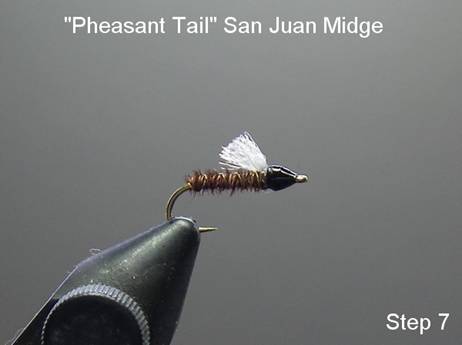
Step 7: Trim the wing material to about ½ of the body length. Finish the head area and go fishing!
Tying Notes
The recipe above is for the “Pheasant Tail San Juan Midge” pattern. There are numerous variations in tying this pattern such as:
Use different styles of hooks.
Use different color wires for the ribbing.
Use dubbing, biots, stripped peacock quill, floss, uni stretch, spanflex, tinsel, turkey tail fibers, other species of pheasant tails or even thread for the body material.
Use different wing material such as Zlon, Darlon, poly yarn, hi-Viz etc.
Add a bead and make it a bead head pattern
Most importantly is to tie the fly using your tying style and preferences.
Fishing Notes
This fly can be fished as a nymph down deep or as an emerger, just below the surface. It’s your choice.
For more great info, check out:
Beginning Fly Tying | Intermediate Fly Tying | Advanced Fly Tying.
